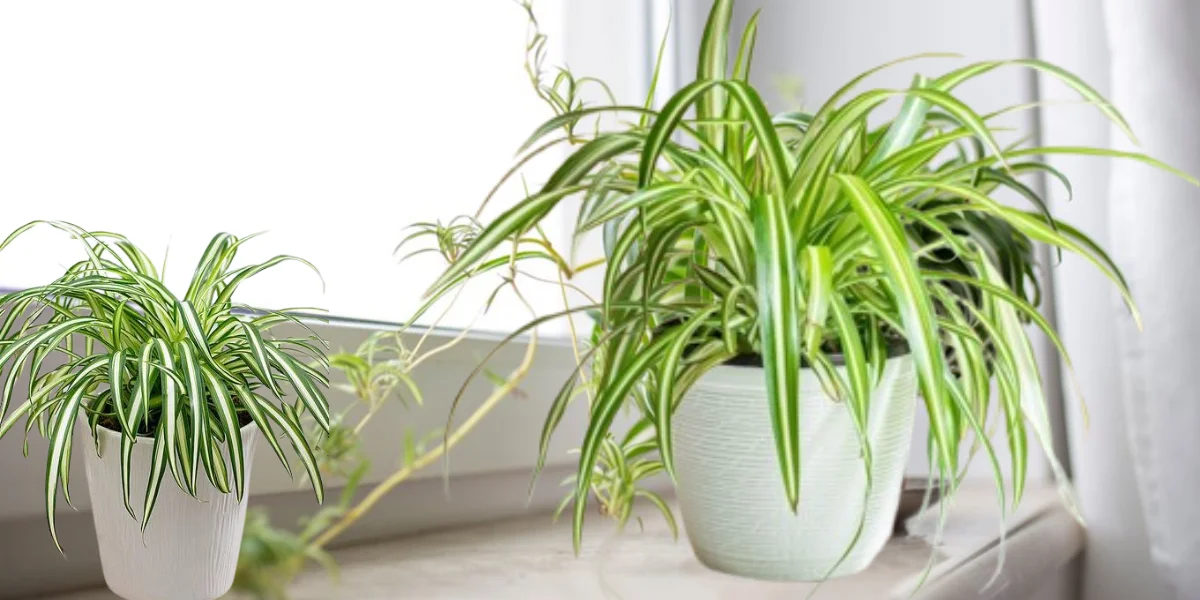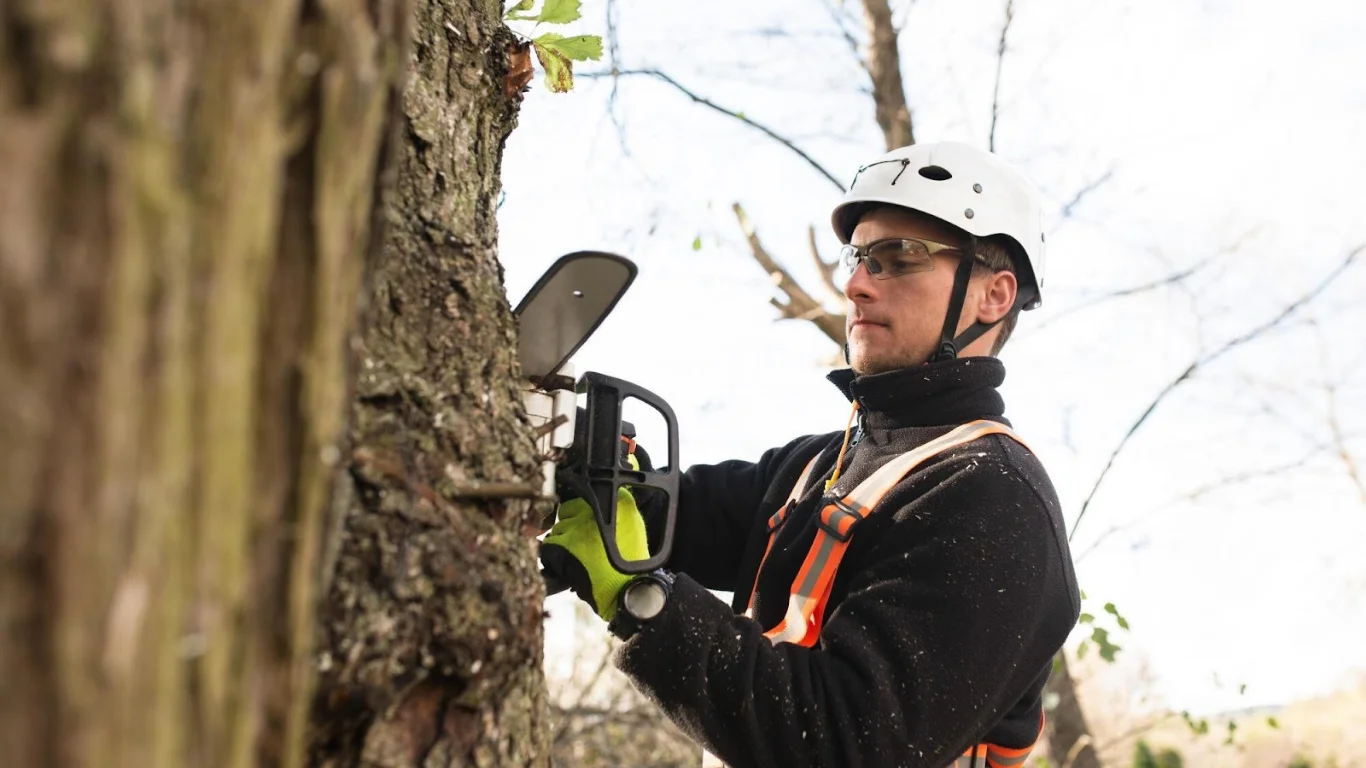Spider plant (Chlorophytum comosum) is one of the most common and popular houseplants. These spider plants are excellent fast growing plants with moderate balance. Their leaves, which are thin and thin, grow 12 to 18 inches long. These leaves are striped green and white leaves.
Their mature plants regularly and frequently produce tall stems that bear small, star-shaped flowers. If we fertilize these flowers, it becomes a small beautiful fruit. If any of their flowers fall off, there are smaller, more beautiful plants, which regularly form their own branches and roots and are later cut back to make potted plants.
Overview
| Common Names: | Ribbon plant, Spider ivy |
| Botanical Name: | Chlorophytum comosum |
| Spread: | 1 to 2 ft. |
| Sun Exposure: | Partial Sun, Shade |
| Family: | Asparagaceae |
| Plant Type: | Perennial, Houseplant |
| Soil Required: | Well drained, Loamy |
| Hardiness Zones: | 9-11 (USDA) |
| Soil pH: | Neutral |
| Bloom Time: | Spring, summer & fall |
| Flower Color: | White |
| When to plant: | Spring & Summer |
| Native Area: | Africa |
How are Spider Plants Grown from Seed?
Often seed propagation is not very common as spider plants are very easy to propagate by dividing or offset planting.
Step 1.
Spider plant flowers must first cross-pollinate to produce viable and excellent seeds. Use cotton swabs to clean them and when they open, brush them with a cotton swab. Brush all flowers regularly to ensure pollination.
Step 2.
When the flowers reach to wither, at that time you replace them with small green seed pods and remove the dried pods from the plant and collect the seeds inside.
Step 3.
The seeds are usually planted about 1/2 inch deep in a small pot filled with potting mix. Fertility should be varied so that you invest more in it to grow and develop.
People also read about China doll plant.
Care for Spider plant
Tips for growing spider plants optimally:
- Moisten the soil and create excellent drainage and then plant in the moist soil.
- These plants prefer to grow best in light shade.
- Works very well in containers
- Water and fertilize them regularly during the changing seasons (spring to autumn) to see the best difference in their growth.
- These plants always thrive in hot and humid conditions, so the temperature should be given as per the requirements.
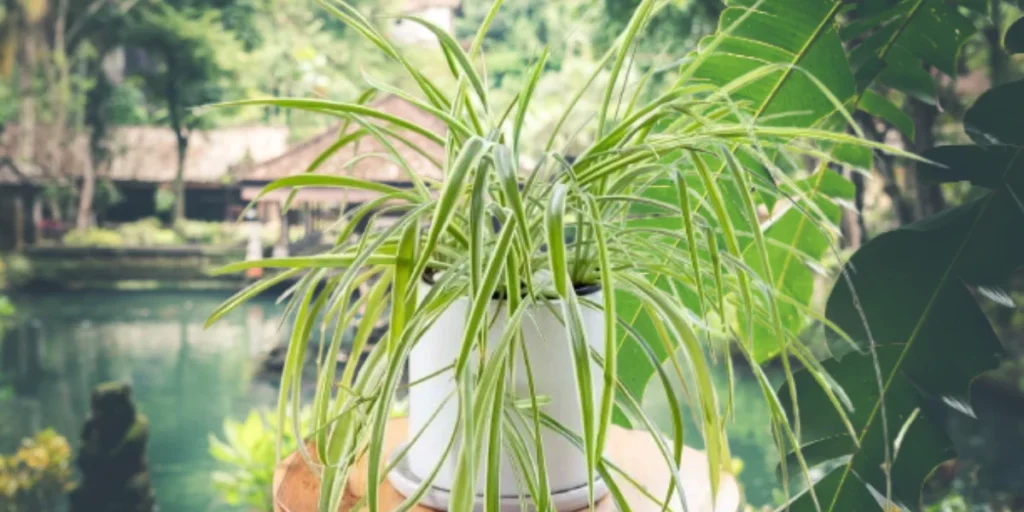
Light
As we have already mentioned, spider plants prefer to grow better in light shade. They have the ability to provide heavy shade, so their growth is not so vigorous. Direct sunlight will burn their leaves, so there must be a window or stand indoors to let in as much light as needed.
Soil
These are plants that grow and thrive successfully in all different types of soil, but always prefer loose and loamy soil with good drainage. These plants prefer a nearly neutral soil pH, but will always tolerate slightly acidic to slightly alkaline soils.
Water
Spider plants like light moist soil and moist soil which makes them grow better. Overwatering will rot the plant’s roots and eventually kill the plant completely. These plants are most sensitive to chlorine and fluoride in the water, so they can turn the tips of the leaves brown. These fleshy tubers retain moisture better so inconsistent watering is best. Although this is not ideal, it will not cause much damage to the spider plant. In cold weather, water the spider plant regularly as needed daily, also mist the spider plant to maintain moisture which is beneficial for plant health.
Temperature and humidity
Spider plants require warm, humid conditions. If the temperature drops below 50°F, they are no longer able to provide heat, and must always be stored away from air conditioning vents and drafts. Try to closely mimic their native warm, humid subtropical and subtropical environments, and for them to grow well, humidity levels of 50 to 60% should be maintained in the room with a humidifier. is done
Fertilizer
They need to be fertilized about once a month during the active growing and changing seasons in spring and summer to cause a constant increase in growth and plant performance, but too much fertilizer. The use of can cause the leaves to turn brown, similarly, giving too little fertilizer can lead to weak growth of the plants, so proper care and fertilizer should be given according to the requirements and according to the orders. If necessary, check the amount of plant growth and adjust the amount based on your %. Often the plant becomes semi-dormant in winter, so do not fertilize it.
Famous Types
There are three main types of spider plant, let’s try to know these types:
01. C. comosum ‘Variegatum’
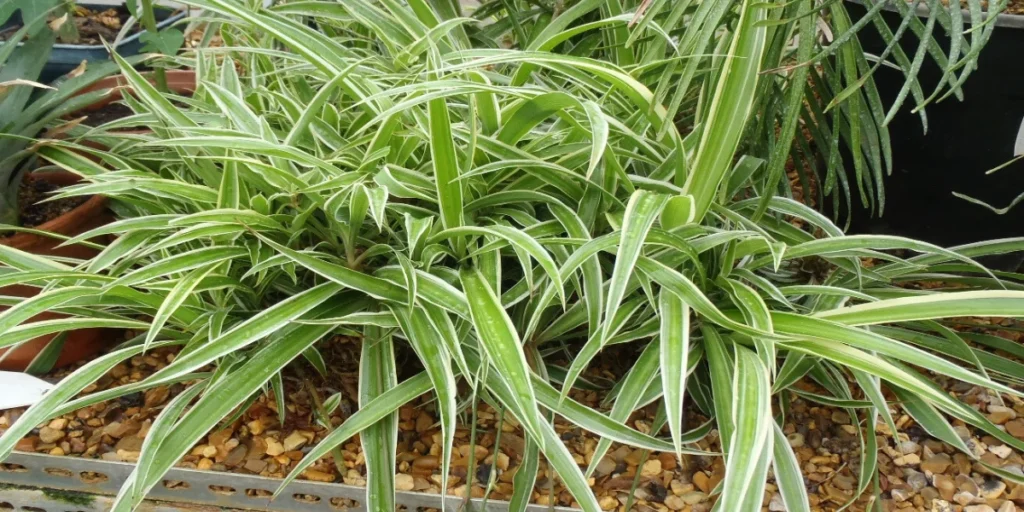
The distinguishing feature of this variety is that their leaf margins are cream or white and they have a dark green stripe around and in the middle of the leaves. The long stems of these leaves are green and lush.
02. C. comosum ‘Vittatum’
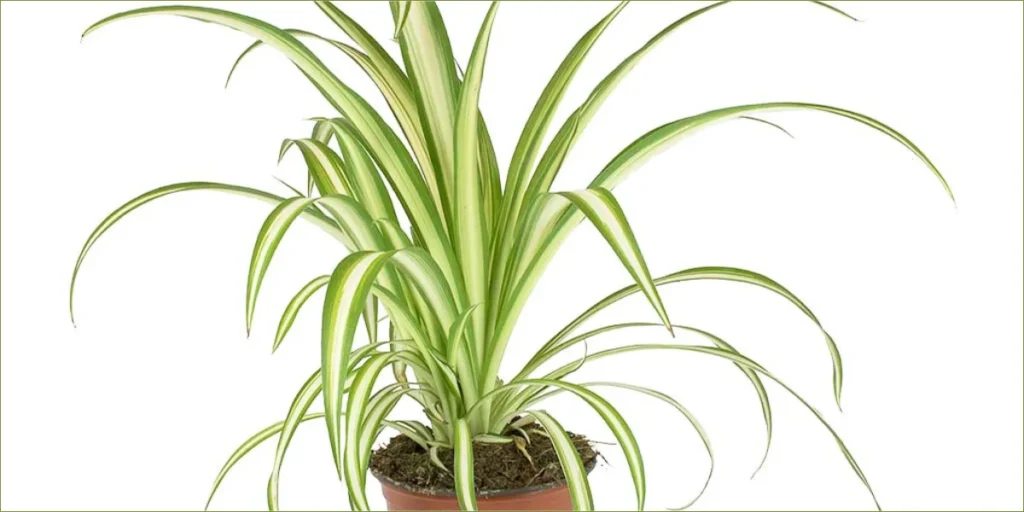
These plants have a lower white band surrounded by a green margin in the middle of the leaves and its distinctive feature is that its long stems are always white.
03. C. comosum ‘Bonnie’
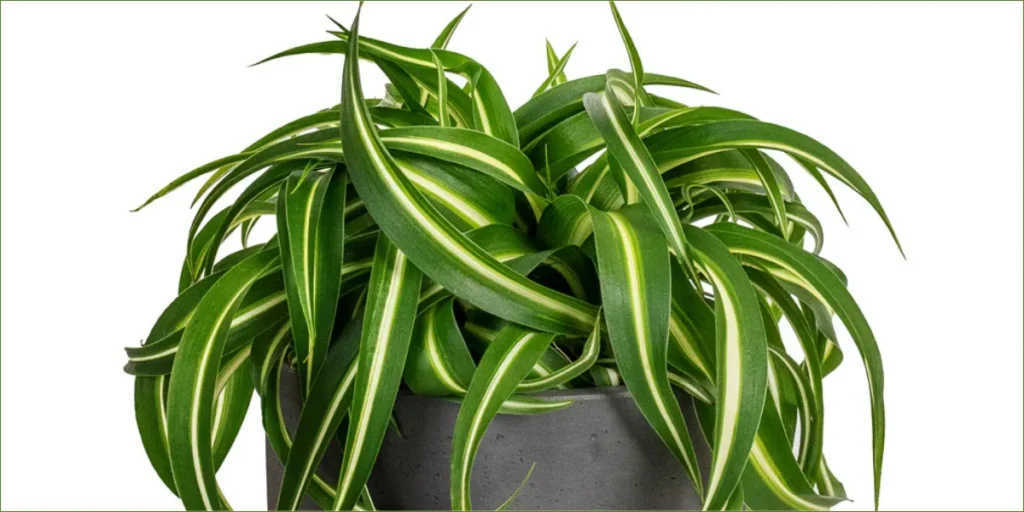
This variety is finer and more compact than the main species and is characterized by loosely curled leaves with green margins and a cream center stripe. And its identity is also that it produces yellow flowers.
Pruning Spider Plant
When you see dead or brown leaves appearing from the plant, cut off the damaged leaves immediately. If a plant is becoming leggy or sparse, remove the branches at this time to direct energy to the main plant and maintain growth and plant health.
Also read about plants that repel wasps and bees from your patio and garden
Propagating Spider Plant
Spider plants are very easy to propagate, they are very easy to grow and you can share them with friends.
- When the roots of the plants on the stems of the spider plant reach 1/2 inch, then it is time to propagate them. You can cut the plants from the stem with ease, keeping the roots intact and careful, with a quick harvest in mind.
- Then you put them in a well-draining clay or soft plastic pot that should be filled with medium temperature of the pot and make sure that it is regularly watered until they are established. The soil should be moist but not wet.
- If you have a plant without roots, a small pot should be kept for it, in which a pot filled with soil should be kept near the plant. Place the plant in the new pot on top of the soil and keep the soil moist and moist. When the roots develop in a few weeks, disconnect the plant from the parent plant and allow it to grow freely in a new pot.
Alternatively, you can remove mature plants from these pots and divide them separately. Gently pull the roots into different sections, keeping as much of the root as possible, and then replant the sections.
Potting and Repotting
Spider plants are often planted as hanging plants in containers because of their tall stems and foliage. These plants tend to perform better as ground covers than other plants in hot climates. Spider plants should always be grown in containers that are no more than 1/3 inch larger than the root ball. Containers should have drainage holes to allow for optimal drainage and use a loose potting mix as well.
They are in dire need of repotting every two or three years. You will know this when you see the roots clearly extending out of the drainage holes and above the soil lines. The best and earliest time to repot is always spring. Remove the plant from the old container and plant it in a larger container at a depth corresponding to its roots and then fill around it with fresh potting mix.
- Always water the plant regularly and frequently and try hard to keep the spider plant moist as most areas experience dry winters.
Benefits of Spider Plant
Isn’t that an amazing thing? Since spider plants have become so popular and have many benefits, let’s review these benefits:
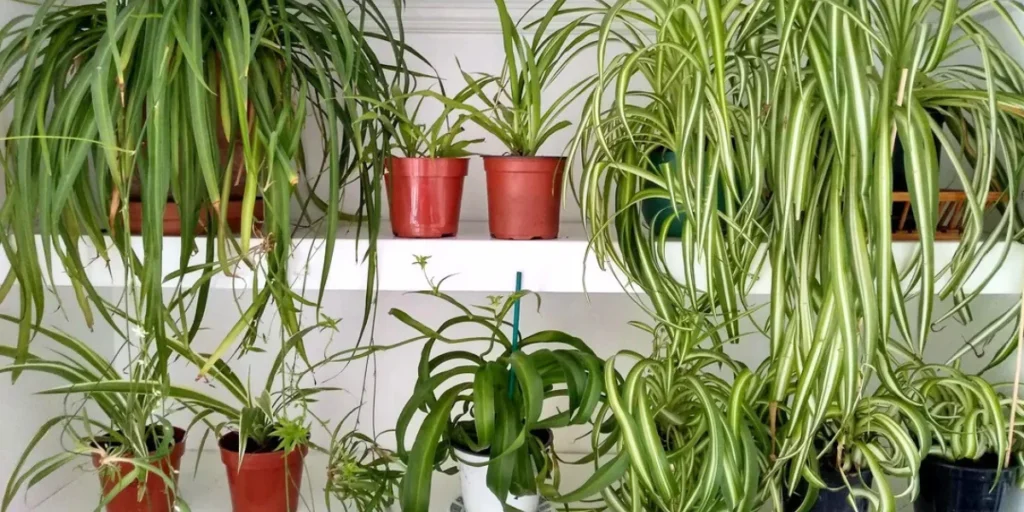
- Although they look very pretty and attractive on a table or counter, spider plants are not very expensive and do not take up much space, so you can easily and successfully grow them in a basket.
- They require very little maintenance, making them ideal for beginners.
- They act as air purifiers in homes.
- They produce many new plants that are easy to propagate.
- They are safe for pets and humans.
Beginner Tip
Spider plants tend not to produce bright flowers, but if you want them to bloom more, you can give the plant a little more light and after a while, sprinkle it around in a circular pattern so that the light reaches all sides regularly. You can also try to skip repotting because if their plants are attached by the roots, there is a high chance that they can increase the overall number of blooms.
Pests and Problems
Spider plants are generally healthier and grow better than other plants, but they are also susceptible to a few pests, including aphids and whiteflies. An effective and natural best way to combat some diseases is to wash the plant thoroughly with water. If the infestation is very fast and heavy, then insecticides and neem oil should be used.
Spider plants rarely cause serious consequences, but the problems they do cause are usually fairly easy to fix.
If the plant stops growing:
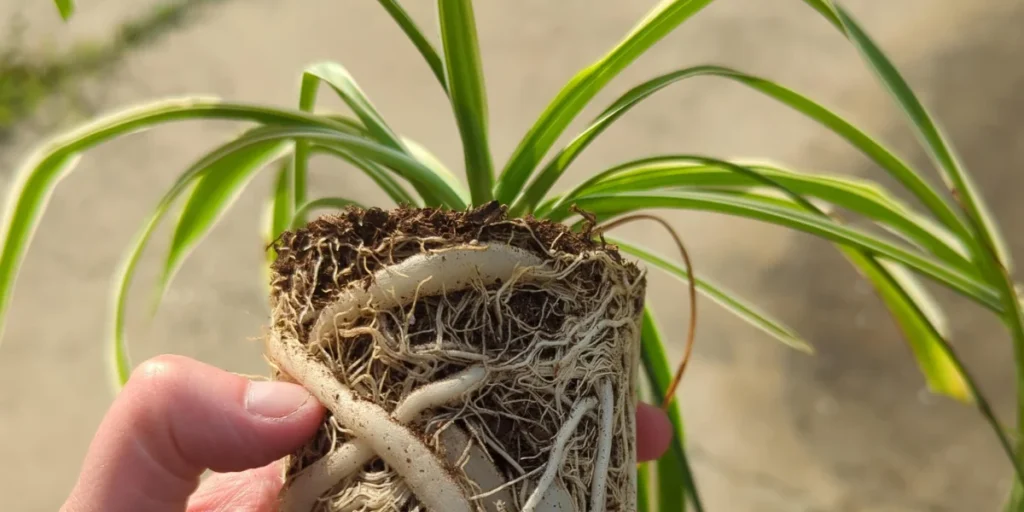
A possible and better treatment is to cut off some of the dead “plantlets” as this directs the energies of the plant to produce more shoots. A solution is to repot and re-divide the plant, which is usually found to be over-rooted. Let me also tell you an important thing that if a plant is healthy and growing normally, but if it suddenly struggles or stops growing after a few months, then you should give the plant more room for roots. Which is damp because it is a clear sign of lack of space.
Leaf burn:
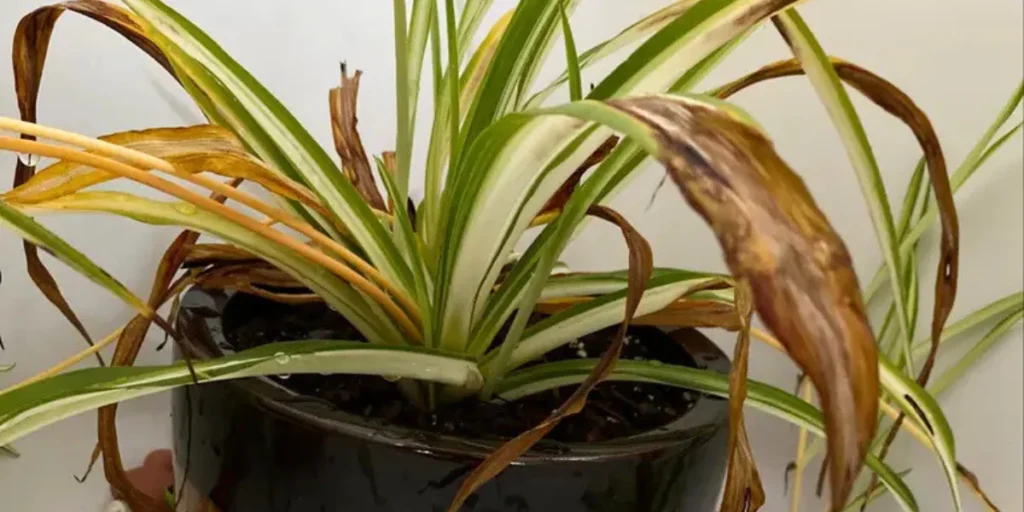
Spider plants are among a variety of houseplants that are particularly sensitive to chemicals commonly found in household tap water, causing the edges of their leaves to turn brown and discolored. If your plant starts showing burnt or dull color then you should cautiously start watering it with collected rainwater or untreated clear water bottles which will restore its color and color within a few days. Will grow up with excellent growth
Browning Leaves:
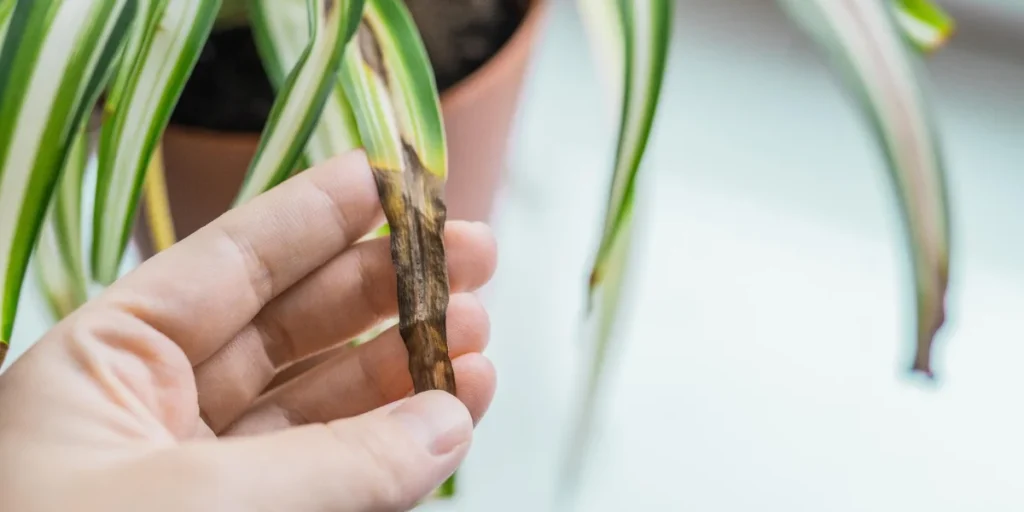
Spider plant leaves turn brown due to many reasons, they turn brown when you give them too much fertilizer, water and too much chlorine. Also, if the humidity is low, the leaves turn brown. But remember that if the humidity is low, then often and most of the leaves will turn brown due to this reason.
FAQs
Spider Plants are good for indoor air as they clean the air by absorbing chemicals including formaldehyde, xylene, benzene, and carbon monoxide.
The best place to grow a spider plant is where there is or is a combination of good drainage, warm climate and moisture. But it sometimes thrives even in cold weather. It is usually grown in the garden for beauty around edges or it is also planted in window sills. Nowadays it is usually grown in every office.
The prickly leaves of Spider plant may leave your hands shredded, always be careful when you water if you do not want to get scratches on your arms.
Yes, the spider plant keeps the indoor air balanced and clean and is great for removing formaldehyde like 3. But in order to clean and optimize the climate of the entire house, a large garden is required, usually around 700 to 900 plants. A house with many plants will have a fairly clean and pleasant climate. Inside a small office, 4/5 spider plants have a noticeable effect and create a pleasant atmosphere.
If spider plants are well cared for, they will last for generations and continue to spread. They continue to pass on their offspring from new batch to new batch, if their care is strictly followed by the suggestions and orders given by us, they always remain intact.
Remember that spider plants are the easiest to grow than other plants, but they are just as susceptible to leaf browning. Browning of leaves, less watering, too much or no fertilizer, too much light and soil moisture are also among the causes of browning of plants. We tell you a safe and best way to avoid this is to water them with light, recommended fertilizer, filtered or clean bottled water that is not usually from a used bottle.
